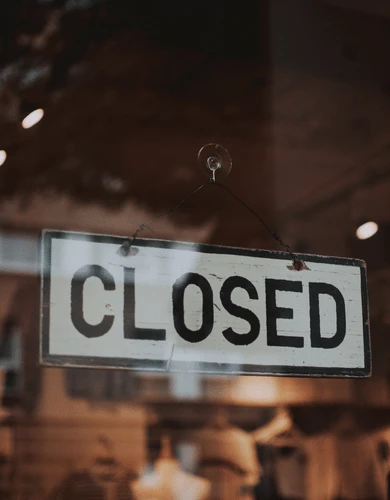Maximum demand meters | How it works!
Demand for energy in the UK is a balancing act. To keep the lights on, the national grid must always ensure sufficient electricity to meet demand.
A tool used to help this is the ‘maximum demand’ charges by distribution network operators (DNOs) on large electricity consumers.
Maximum demand charges limit the maximum consumption of energy-intensive businesses at peak times.
The maximum demand charge sets a ceiling to the maximum power consumption of a business in any half an hour period. You’ll incur an excess demand charge if your business exceeds the maximum.
A maximum demand charge will appear on any business electricity bill where energy is supplied with a half-hourly meter.
Before we get into maximum demand meters, we first look at the definition of “Maximum demand”; then delve into the detail, answering key questions surrounding maximum demand.
What is maximum demand?
Maximum demand refers to the peak amount of electricity a business uses during any half-hour billing period.
Maximum demand charges are additional to business energy consumption charges and are calculated using a fixed capacity charge rate per kilowatt (kW) of contracted capacity.
We delve into this in more detail below, exploring the capacity charges, metering and excess charges.
What is a maximum demand meter?
Business energy suppliers use a maximum demand meter to determine a customer’s peak electricity demand, which is then used to calculate their electricity bill.
A maximum demand meter is a meter that measures the highest level of electricity demand (in kilowatts or kW) during a given 30-minute period over a specified timeframe, usually a month.
Large energy-intensive, commercial energy users, such as factories, office buildings and shopping centres, typically have maximum demand meters.
Using a maximum demand meter, business energy suppliers can measure the peak energy consumption of their customers. Maximum demand meters help to incentivise more efficient and reliable energy use, reducing overall business energy costs.
How does a maximum demand meter work?
A maximum demand meter measures the highest amount of electrical power consumed by a particular consumer during a specified period (usually half an hour).
A half-hourly meter records the power demand regularly and stores this information for future analysis. It’s calculated by measuring the amount of electrical energy passing through it and calculating the average power consumption over a specific period.
This data is then used to determine the maximum demand of the consumer. Maximum demand meters are commonly used in commercial and industrial settings with high electricity demand.
The meter helps the electricity supplier manage the electricity distribution, allowing the consumer to understand their energy usage better and make adjustments to reduce their electricity consumption during peak hours.
Following P272, the profile class 05-08 half-hourly meter will send consumption data automatically to suppliers. This data reflects your actual consumption of electricity. The meter records the total energy consumed by the consumer, which is then used to calculate your electricity bill.
How are maximum demand charges calculated?
Maximum demand charges are also known as availability or capacity charges, which are imposed by your DNO. The capacity will be agreed upon before you move into your premises and based on your predicted usage with a small amount of leeway.
Maximum demand charges will appear separately from your usual consumption charges. Capacity charges differ depending on location, ranging from 70p to £1.50 per kVA each month*.
For example:
Premises with a site at 500kVA and a charge of £1.50 per kVA would be required to pay £750 a month in capacity charges.
*kVA is a measure of apparent power: it tells you the total power used in a system. In a 100% efficient system, kW = kVA. However, electrical systems are never 100% efficient, so not all of the system’s apparent power is used for useful work output. Ref: https://powerelectrics.com/blog/the-difference-between-kw-and-kva
What is the difference between a maximum demand charge and an excess capacity charge?
Maximum demand charges and excess capacity charges should not be confused. Maximum demand charges are paid monthly based on your agreed capacity levels.
Excess capacity charges are only paid if you exceed the agreed maximum demand. These charges are, on average, 73% higher than your normal rate and can mount significantly over a long period.
How do I know if I’m on a maximum demand meter?
There are a few ways to check if you are on a maximum demand meter:
- Check your electricity bill – If you are on a maximum demand meter, it should be clearly stated on your electricity bill. Look for references to “MD” or “maximum demand” charges.
- Contact your business energy supplier – You can also contact your energy supplier and ask them if you are on a maximum demand meter. They can provide information about your meter type and its associated charges.
- Check your meter – If you can access your electricity meter, you can check the meter type on the front of the unit. Maximum demand meters are typically larger and more complex than standard meters, with additional dials or displays.
- Check your supply number – Starting with a ‘S’, there will be a 21-digit number that usually appears in a box on your bills with the heading of ‘Supply Number’. Look for the first two digits in the sequence of numbers next to the ‘S’. This will show you your profile class. You will be a maximum-demand customer if you are in profile 05, 06, 07 or 08.
It is worth noting that larger commercial and industrial energy users typically use maximum demand meters. So, if you are a residential customer or a small business, you are less likely to be on this type of meter. However, if you are unsure, it is always best to check with your energy supplier.
Do I need a maximum demand meter for my business?
Maximum demand meters are typically required for larger businesses with a high energy consumption level or a half-hourly metering obligation. In our guide, you can read more about half-hourly meter obligation.
If your business has an energy consumption of 100kW or more in any half-hour period, or if you have a half-hourly metering obligation, then the law will require you to install a maximum demand meter.
If your energy consumption is under 100kW, you may not need a maximum demand meter. It’s worth checking with your energy supplier or a qualified electrician to determine whether you need a maximum demand meter for your business based on your energy usage and contract type.
How do I reduce my maximum demand charges?
With a maximum demand meter, you’ll also have maximum demand charges based on the agreed-upon capacity with your business energy supplier. To help reduce these, you can implement the following:
Improve your energy efficiency
Improving energy efficiency can reduce energy consumption and lower maximum demand charges. Consider replacing old equipment with newer, more energy-efficient models or implementing business energy-efficiency measures such as LED lighting or motion sensors.
Power factor correction
Power factor correction involves improving the efficiency of electrical systems by reducing the amount of reactive power drawn from the grid. This can be achieved through the installation of capacitors or by improving the design of electrical systems.
Load management
Load management involves shifting electricity usage to off-peak hours to reduce peak demand. This can be achieved through timers, commercial smart meters or software that can help automate and manage electricity usage.
Avoiding peak time
Avoiding high-demand periods altogether can reduce maximum demand charges. This can be achieved by scheduling energy-intensive activities during off-peak hours or by negotiating with your electricity supplier to change your tariff to one that better suits your usage pattern.
Renewable energy
Generating your own renewable business energy by installing solar panels or wind turbines can reduce reliance on grid electricity and lower maximum demand charges.
Can I switch energy suppliers if I have a maximum demand meter?
You can switch business energy suppliers with a maximum demand meter in the UK. Switching energy suppliers with a maximum demand meter is slightly different than a standard meter, but it is still possible.
When you switch energy suppliers with a maximum demand meter, the new supplier will need to arrange for a new data collection device to collect the meter’s half-hourly readings.
This may take a few weeks to arrange, but you won’t experience any interruption to your energy supply during this time.
It’s worth noting that switching business energy suppliers with a maximum demand meter can be more complex than with a standard meter, as the capacity charge is based on your maximum demand, and the way that it is calculated can vary between suppliers.
It’s important to carefully compare business energy tariffs and seek advice from a reputable energy broker or advisor before switching.
What is the difference between maximum demand and normal meters?
A normal energy meter measures the total electricity a business consumes over a billing period, usually a month or a quarter. The readings from a normal meter are used to calculate the customer’s electricity bill.
A maximum demand meter, also known as a half-hourly meter, records the maximum amount of electricity a business consumes during any half-hour period.
The readings from a maximum demand meter are used to calculate the customer’s “capacity charge”, an additional fee added to the customer’s bill based on the maximum amount of electricity used during the billing period.
What is the maximum demand charge for electricity in the UK?
The maximum demand charge depends on your business energy supplier and your agreed tariff. Business electricity suppliers typically quote maximum demand charges as a fixed cost in pence per day.
Compare business energy prices
If you are looking to change to a new business energy supplier or look to compare the latest business gas and business electricity prices, you can use the AquaSwitch comparison services to:

